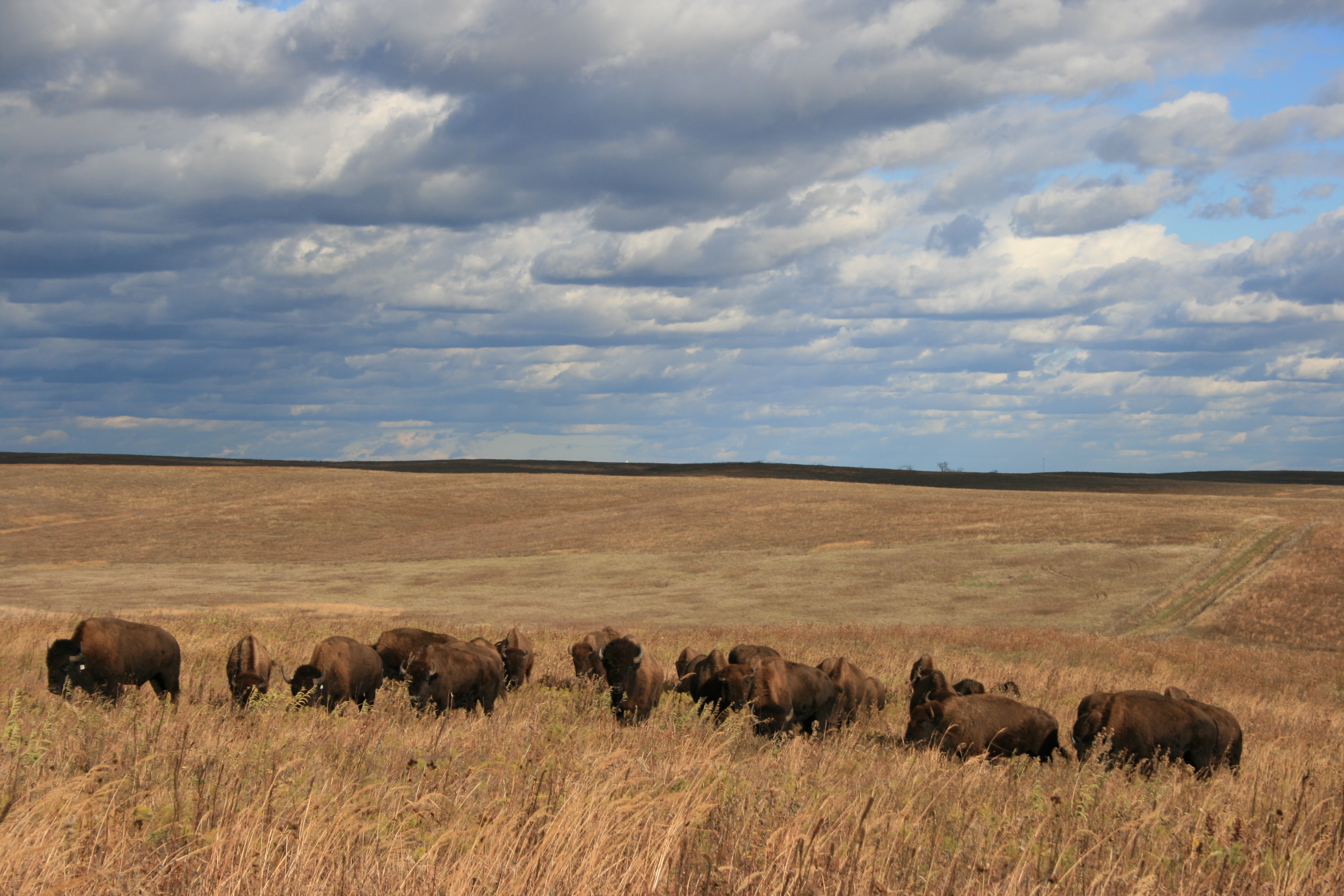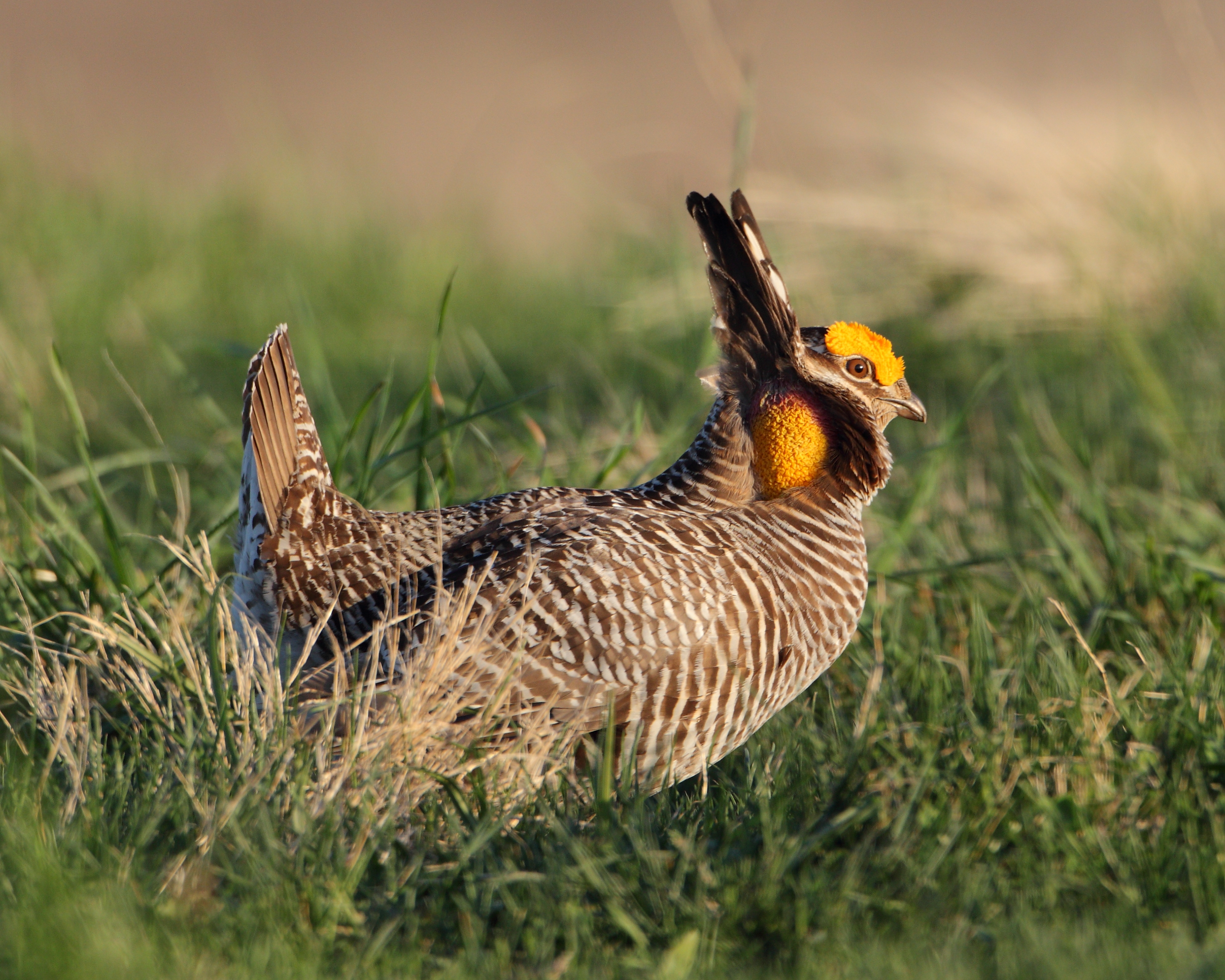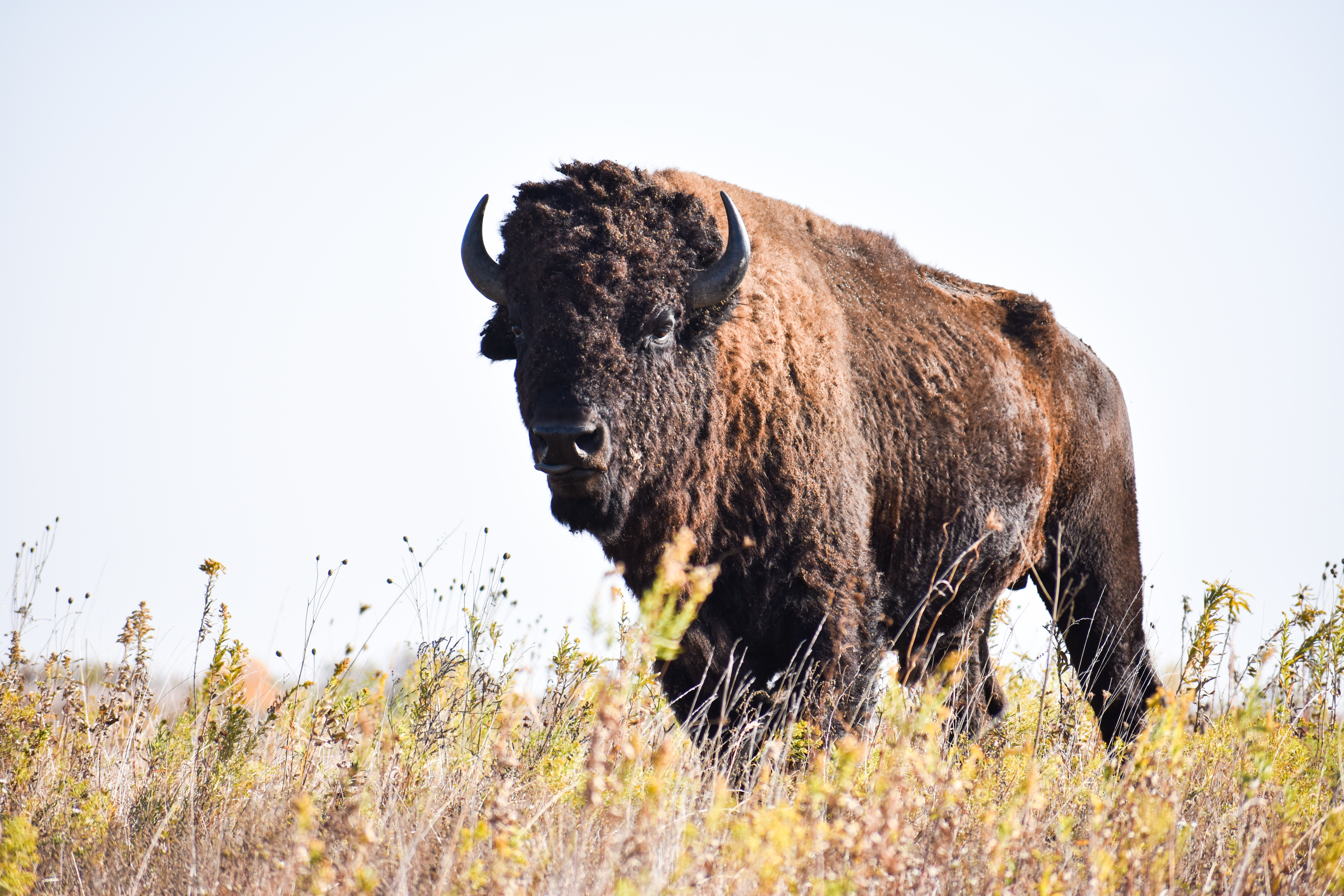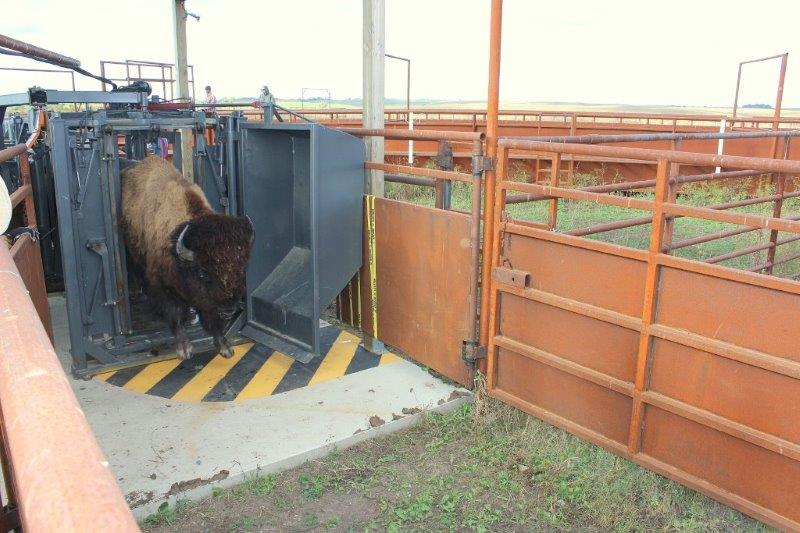Prairie Protectors – How Saving Bison is Key to Regeneration at Dunn Ranch
The Nature Conservancy is working to preserve bison in a symbiotic effort to revitalize the prairie ecosystem.
Wednesday, 15 January, 2025

The American bison, once on the brink of extinction, has made a remarkable comeback. Thanks to dedicated conservation efforts, its population has now reached half a million. Since 1978, The Nature Conservancy has played a crucial role in this success, establishing 12 herds across the United States and reintroducing a herd to Dunn Ranch Prairie in Harrison County.
There, bison roam freely across the plains, not just as bystanders but as conservationists themselves. A keystone species, their very existence on the land helps the ecosystem thrive, bringing other dwindling species back from the brink. It’s a triumphant return where bison aren’t just back, they’re giving back.
Getting the Job Dunn
Over 150 years ago, the Dunn family set up their homestead in northern Missouri, where fields of wildflowers, virgin bluestem and switchgrass swayed across the great plains stretching over the horizon. While much of the surrounding land was tilled for corn and wheat fields or used for grazing cattle, more than 1,000 acres on Dunn Ranch are categorized as ‘remnant prairie’, having never been plowed or tilled.
This jewel of the grasslands soon reached the ears of The Nature Conservancy, and after initial talks in the 1970s, it was almost 30 years before TNC purchased the ranch in 1999 and promptly began a decades-long conservation program.

The program began 26 years ago with Dennis “The Bison Whisperer” Perkins at the helm. Having already worked on Dunn Ranch just 3 miles from his home farm, he was asked to stay on and help reintroduce the bison to the grasslands. His son, Brett Perkins, has since stepped up as Bison Herd Manager.
“In my earlier years, I took for granted the gift that was all around me. That I got to grow up in and watch the grasslands evolve. Looking back now, I enjoy helping other people understand what used to be there, what was lost and how we can help support it.”
The tallgrass prairies are the most endangered ecosystem in North America. Once spanning 15 million flourishing acres in Missouri, less than half of one percent remains today. The primary reason for this drastic decline is the grasslands’ high suitability for row cropping.
“Now we have an opportunity to incorporate a more sustainable model and make small impactful changes towards resilience, leaving land in a dynamic state to be able to let Mother Nature do her thing."
The TNC staff collaborate with volunteers and conservation groups to administer regenerative practices—such as controlled burns, removing invasive species, re-introducing desirable ones and much more—in a concerted effort to rejuvenate the prairie to encourage diversity of plants and animals that support each other in the rich, dynamic ecosystem.
Playing Chicken
While prairie chickens used to roam freely in the grasslands their numbers had dwindled significantly due to hunting and predation. As part of the reintroduction program, these greater prairie chickens had been welcomed to Dunn Ranch but were still struggling to survive. High grasses restricted their movement and made them easy targets for predators.
To mitigate this, cattle had been tried before but bison were ultimately successful due to their selective grazing, allowing forb canopies to develop while keeping grasses short. This allows overhead cover for the prairie chickens without hampering their movement on the ground.

“Bison like to be on high knobs with a lot of visibility and so do the chickens.” Brett adds, “Keeping the grass short, the chickens have room to perform their mating rituals and ‘booming’ dance.”
So, in 2011, a small herd of 35 bison from the Wind Cave National Park were re-introduced to the ranch to help the prairie chickens and restore the land. These rare bison, descendants of just two herds in the US, have since grown to a herd of over 200. Though these bison have some mixing with cattle, they have unique genetic traits not found in any other herds, making them an important genetic group to sustain and grow.
Habitat Heroes
Bison play a vital role in the grasslands they roam. From the quality and nutritional value of the soil; seed dispersal and fertilization; to providing habitat for other species, bison simply being bison makes for a biologically rich prairie.
Wallowing involves rolling around in the dust and dirt to cool and soothe their muscular frames. Due to the bison’s size and weight (up to 2,200 pounds), their wallowing creates depressions in the earth that fill with water, providing a habitat for water-dwelling species: insects, amphibians and reptiles.

Bison also enjoy roaming which helps the entire endangered ecosystem. They prefer to graze recently burned areas of the prairie, following the fire to crispier grass. The resulting mosaic of burned and grazed areas to unburned and less grazed areas fosters diversity that supports all the species sharing this living space.
As bison travel, their furry hides collect and drop off seeds throughout their movements, aiding in seed dispersion. Combined with their preference for dominant sedges and grasses, a diverse range of wildflowers have flourished in their wake across the prairie. In addition, the low vegetation provides habitat for rare birds, such as the upland sandpiper, to nest and hatch.
Their powerful hooves aerate the soil, encouraging organic matter in the created space, while their ‘buffalo chips’ (colloquial term for dried bison manure) fertilize the new growth. This roaming behavior prevents overgrazing, promotes soil health and keeps the grass at the best height for other species—a behavior that is now mimicked on farms through rotational grazing techniques.
Bison Balance
Maintaining the health of more than 200 bison throughout 3,258 acres of prairie is no small task. Each animal requires worm treatment, vaccination, eID tagging, weighing, pregnancy scanning, injury treatment, plus eye and horn checking. A tall order, especially given the wild bison are skittish in new surroundings.
To carry out this mammoth effort, each of the 11 bison ranches holds an annual round up, drafting reinforcements in expertise and equipment. As Bison Data Lead, Brett says the priority is to gain as much data to share across the ranches, while ensuring safety and the least amount of stress to the animals.
Pulling DNA is also paramount, “We used to only report on sex and herd dynamics but now it’s more developed. Genetic features make sure these animals remain genetically diverse, adaptable and the strongest they can be. If they get too closely related all sorts of things start going wrong.” says Brett.
Since 2020, Gallagher Animal Management representatives have attended the round up at Dunn Ranch Prairie. Using Gallagher WEID stations and Animal Performance Plus software enabled the team to efficiently track the bison's measurements and make informed decisions about their well-being. This support was welcomed to nine TNC round ups in 2024.
“We’re fortunate to have Gallagher be so close in Kansas City, they’re a bunch of wicked smart guys... figuring a lot of stuff out that’s new on the horizon and making sure we stay enough ahead of the curve to be ready for those changes.” Brett remarks.

Wes Chism, Business Development Manager at Gallagher North America, has attended each round up since then.
“Dunn Ranch is at the forefront of the data collection. They're doing more than anybody else is. They ask things of our TW systems that we'd never thought about before... 9 traits aren't enough; we work closely with them to look for further software improvements.” says Wes Chism.
Back from the Brink
American bison narrowly survived near extinction from over-hunting and cattle diseases from the ‘Great Destruction’ of the 19th century. This eradication was intended by the US government to remove Native Peoples from the land and make way for settlers and cattle.
By 1889, bison numbers had plummeted to under 500 animals. Recovery efforts were underway from 1907 and eventually bison were awarded the official ‘U.S National Mammal’ status in 2016.
The mass culling of the bison had a profound and long-lasting toll on the health and wellbeing of the native Tribes who depended on bison for food, clothing, tools and shelter. This loss is still in reparation today through an initiative between TNC, the InterTribal Buffalo Council and the Tanka Fund.
Through the Buffalo Restoration Program, TNC works collaboratively with Tribal partners to transfer surplus bison from TNC preserves back to Tribal communities across the continent. Through this partnership, TNC is beginning to recognize the importance of Indigenous values and lifeways and ways to build collaboration, a key step toward achieving their ambitious conservation goals.
Although there’s still much to do, The Nature Conservancy’s efforts at Dunn Ranch Prairie show that protecting keystone species like the American bison can rejuvenate and diversify entire ecosystems. Their program is restoring this Missouri grassland to its former glory, where bison and prairie chickens once again roam freely.